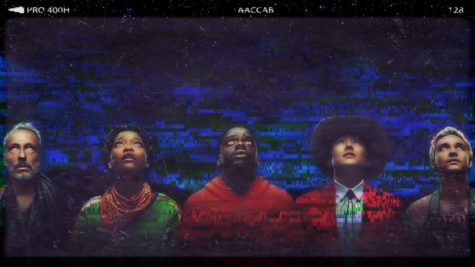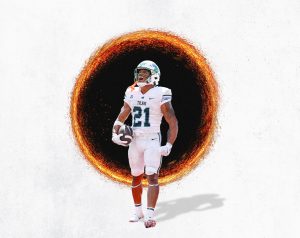“Nope”: The Horrors of Spectacle
September 14, 2022

“I will cast abominable filth upon you, make you vile, and make you a spectacle,” reads the opening text of “Nope,” quoted from scripture, Nahum 3:6. It processes in my brain about a few seconds too late, and when I look again, it’s gone. Something tells me I should’ve read closer when I had the chance.
As the third horror installation of Jordan Peele’s self-written, directed and produced films following “Get Out” and “Us,” “Nope” is a being unto itself. Starring Daniel Kaluuya as Otis “OJ” Haywood, Keke Palmer as Emerald “Em” Haywood, Steven Yeun as Ricky “Jupe” Park and Brandon Perea as Angel Torres, this western-horror-science fiction amalgamation has a lot to say about tokenism and the movie-making industry as a whole.
It’s nothing new for Peele; his movies have always called into question the ‘social demons’ of culture. The introductory act positions OJ and Em as descendants of the Black horse jockey who starred in Eadweard Muybridge’s 1878 moving picture, The Horse in Motion — a film that kickstarted modern-day cinema.
In the film, OJ and Em reveal that the horse jockey is their direct ancestor. In reality, however, the rider’s identity is sadly lost to time, and our main characters inherit no familial esteem. The erasure of Black contribution and their exploitation in film history is a theme that ripples through the run-time following the Haywoods’ disclosure.
OJ is quiet and contemplative in contrast to his irreverent and pragmatic sister, Em. The two implicitly grapple with the significance of being the descendants of Hollywood’s origins. They utilize various coping mechanisms to process their loss — a shot at Hollywood fame — taken away from them so long ago.
It’s not inaccurate to say that privilege and rampant elitism make up Hollywood, and it’s interesting to see just how far these qualities travel in the name of content. We, the eager and captive audience, thrive on the grandiosity of the big screen, allowing the immorality behind the screen to further infiltrate the film industry.
Questions left at the end of “Nope” are unanswered, and we crave their explanation more and more — consumption at its finest and most metatextual. Of course, this consumption appears throughout the film as the creature needs to feed periodically, sucking everything up in its path like an Oz tornado. The opening credits take place inside its stomach, endless pitch darkness framed by sheets billowing in the internal wind, looking awfully reminiscent of a hood that a photographer might hide under to use a plate camera.
Former TV star and current theme park owner Jupe calls it ‘The Viewer’ minutes before he and the rest of the guests at his entertainment venue perish in its throat. “In one hour, you will leave here having witnessed a spectacle,” he says, with one hour of run-time left before the film’s ending credits.
Staring straight at ‘The Viewer,’ Jupe meets his doom. It’s loud, uncomfortable and wince-worthy, but did we really expect anything less? Are we not complicit in the violence of observation while eating our buttered popcorn and drinking Diet Cokes? The panopticon is internal — eternal — and we are but complicit in its spectacle.
What might we choose next to turn into spectacle? Will it be human or animal? How badly do we need gratuitous entertainment? Will we overlook exploitation and forget those who originated that entertainment?









Leave a Comment